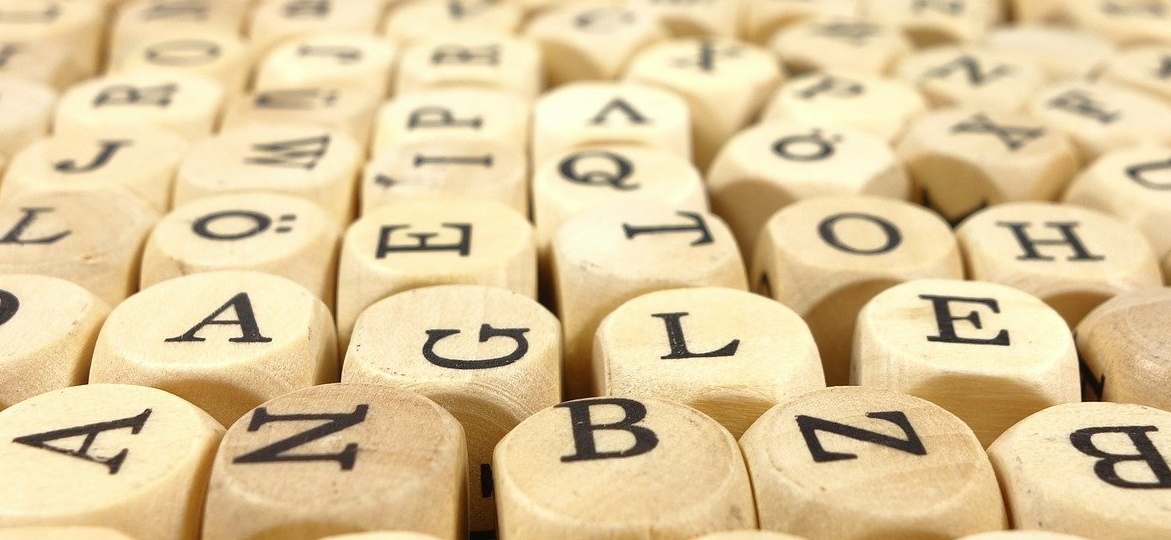A, E, I, O, U, Y. These 6 inofensive little letters are often a French learner’s nightmare. Sometimes silent, sometimes with 4 different pronunciations… the French vowels can be tricky but it is so important to know how to pronounce them if you want to be fluent in French. In today’s new post, GlobalExam will give you a quick guide on French vowels to help you master them:
- How to learn French vowels?
- When NOT to pronounce vowels
- How to master nasal sounds
- Associate French sounds with English sounds
- Somes examples and exercises
- Learn French and improve at your own pace with General Français!
Now without further ado, let’s get into it!
How to properly learn French vowels?
If French vowels are so difficult to master for English speakers it is because some of the sounds don’t exist in English. So, of course it is always tricky to pronounce something that you’ve never heard or pronounced before! Just like it is easy to mispronounce something in English and understand something totally different, the same goes with French. Also, without knowing the pronunciation of vowels and the alphabet in general, you will never be able to speak and read correctly in French. So vowel pronunciation is very important to learn. There are about 13 to 15 vowels sounds in French (standard French because some dialects like Quebequois have more).
The importance of the IPA
If you want to learn your vowels, or in general the French pronunciation of alphabet and words, the first thing to do is to learn the IPA. The International Alphabetical Language will help you understand the sounds and words you’re seeing and make sure you’re pronouncing them correctly, even if you’ve never heard them before. The IPA will help you compare the sounds to the ones in your native language and know how to actually pronounce any word. The IPA is also valid for almost any language, so if you want to learn another language it will be useful too.
The importance of silent vowels
Then, it is important to know that some vowels can be silent sometimes. Depending on the words, on how it ends… Some vowels are not pronounced and it is important that you learn the rules that teach you how to pronounce vowels as well as when to NOT pronounce them. Then, don’t forget to learn French accents! No, not the different “dialects” and regional forms from French Islands or Québec, but the little symbols you can sometimes encounter on some vowels. They’re also super important and often modify the sound of the vowel. Whenever you learn a vowel, learn its set of accents as well. It will be easier and quicker for you to master them.
Here are a few tips to help you learn them.

#1 How to know when not to pronounce French vowels
The rule is simple: just keep in mind that all final vowels are always pronounced in French. Except for one: the vowel E.
The only time an E will be pronounced is if it comes at the end of a monosyllabic word (one syllable), after a consonant: LE / ME / TE etc. That’s it!
#2 Don’t forget to train your nasal sounds
Nasal vowels and nasal sounds are very present in French. But you produce them in English too so it shouldn’t be too hard for you to pronounce. A nasal sound is produced when the air passes through the nose and mouth (where in comparison with a vowel sound, the air only passes through the mouth). You can easily recognize them because they’re any vowel followed by an M or an N (try humming the letter M (mmmm) or N (nnnnn) and you will see which sound we are talking about), not followed by another vowel. For example: Nasal: Un// Voiced: Une. The IPA symbols for the nasal vowel sounds are: ɑ̃ (nasal A) ɛ̃ (nasal I) ɔ̃ (nasal O) œ̃ (nasal U).
#3 Associate French sounds with sounds you already know
To help you understand and know how the sounds are produced, try to link each sound you’re learning with one you already know. For example: the sound produced by the “a” from the word “dad” is the same as a French vowel “a”, the letter “i” in French is the same as the vowels in “sleep” etc.
#4 Learn the vowels first, then diphthongs
It will be easier for you to learn vowels first. Like we said earlier, learn each vowel one after the other, try to learn them in order: A, E, I, O, U or U, O, I, E, A. If you see phonemic charts (where the sounds are placed in the mouth when pronouncing vowels) you will see that the vowel “A” is placed the farthest in the mouth (in the back of the mouth, nar the throat), then the vowel E, then I, O, and finally, U. Learning them in order will help you understand where they’re placed in your mouth. This will make it easier for you to understand their pronunciation and to produce the right sounds. Don’t forget to learn each asset of accents with each vowel. Then, when you master the vowels and their variations (the accents), it’s time to learn the French diphthongs. Diphthongs are very common in English and there are some in French too. They’re like a double sound, two vowels that make one sound. The “a” in make is a diphthong: /ei/
Here’s a chart with French diphthongs along with some examples to help you:
| Vowel | Onset diphthong /j/ | Onset diphthong /ɥ/ | Onset diphthong /w/ | Example |
|---|---|---|---|---|
| /a/ | /ja/ | /ɥa/ | /wa/ | paillasse, Éluard, poire |
| /ɑ/ | /jɑ/ | /ɥɑ/ | /wɑ/ | acariâtre, tua, jouas |
| /ɑ̃/ | /jɑ̃/ | /ɥɑ̃/ | /wɑ̃/ | vaillant, exténuant, Assouan |
| /e/ | /je/ | /ɥe/ | /we/ | janvier, muer, jouer |
| /ɛ/ | /jɛ/ | /ɥɛ/ | /wɛ/ | lierre, duel, mouette |
| /ɛ̃/ | /jɛ̃/ | /ɥɛ̃/ | /wɛ̃/ | bien, juin, soin |
| /i/ | /ji/ | /ɥi/ | /wi/ | yin, huile, ouïr |
| /o/ | /jo/ | /ɥo/ | /wo/ | Millau, duo, status quo |
| /ɔ/ | /jɔ/ | /ɥɔ/ | /wɔ/ | Niort, quatuor, wok |
| /ɔ̃/ | /jɔ̃/ | /ɥɔ̃/ | /wɔ̃/ | lion, tuons, jouons |
| /ø/ | /jø/ | /ɥø/ | /wø/ | mieux, fructueux, boueux |
| /œ/ | /jœ/ | /ɥœ/ | /wœ/ | antérieur, sueur, loueur |
| /œ̃/ | - | - | - | - |
| /u/ | /ju/ | - | /wu/ | caillou, Wuhan |
| /y/ | /jy/ | - | - | feuillu |
Some examples about French vowels and their pronunciation
Now that you understand a bit better the French vowels and how to learn them, here’s a quick chart that will help you learn the vowels sounds and nasal vowels sounds.
Oral vowels
| Vowel | IPA | Example | Translation |
|---|---|---|---|
| i | /i/ | si | if' |
| e | /e/ | fée | fairy' |
| /ɛ/ | fait | does' | |
| /ɛː/ | fête | party' | |
| /ə/ | ce | this'/'that' | |
| eu | /œ/ | soeur | sister' |
| /ø/ | ceux | those' | |
| u | /y/ | sû | known' |
| ou | /u/ | sous | under' |
| o | /o/ | sot | silly' |
| /ɔ/ | sort | fate' | |
| a | /a/ | sa | his'/'her' |
| /ɑ/ | pâte | dough' |
Nasal vowels
| IPA Vowel | IPA Example | Example | Translation |
|---|---|---|---|
| /ɑ̃/ | /sɑ̃/ | sans | without' |
| /ɔ̃/ | /sɔ̃/ | son | his' |
| /œ̃/ | /bʁœ̃/ | brun | brown' |
| /ɛ̃/ | /bʁɛ̃/ | brin | twig' |
Some exercises that will help you learn French vowels
Now with what you’ve learned so far, it is time to put everything in practice. The best exercises you can do about pronunciation is to begin with exercises that have audio recordings and audio examples. This will ensure you get the right pronunciation from the beginning.
YouTube is filled with videos on learning French pronunciation, French vowels and French nasal sounds. Pick one and follow along. There are also a lot of good websites that offer some exercises for free, such as ielanguages.com. These exercises will make you hear a sound and pick between several suggestions. A perfect training exercise for your ear.
Tongue Twisters are a funny way of practising
Once you’ve got a good grasp on French vowels, you can always try tongue twisters. There are tongue twisters about every sound of the French language, so tongue twisters about vowels will help you get tons of practice. Here is one about the nasal sound “on”: Si mon tonton tond ton tonton, ton tonton sera tondu. And another one about the vowel sound “u”: As-tu vu le tutu de tulle de Lili d’Honolulu?
Recording yourself is the best way to improve your accent
Then, you can record yourself while saying something out loud to improve even further. Recording yourself can sometimes be not pleasant at all but trust us: it is one of the best ways to improve your pronunciation. Pick audio files in French and try to say it back out loud, while you’re recording. Then, listen to it and try to pick up where you don’t sound French, where you’re a bit off etc. Note these down and do the exercise again, this time try to focus on what you missed. If you practice this regularly you will sound like a true native in no time!
Learn more about French online thanks to Global General
Like we said, practise makes perfect and the more you will practice French vowel pronunciation the easier it will be for you to master them.
Exercices along with good resources will help you improve even quicker. This is why Global General from GlobalExam is best for you. Global General is an online training platform that will help you learn French from the comfort of your computer. It is meant for beginners as well as intermediate level learners. It is easily accessible and meant for all ages. Training on our platform will give you access to:
- Fun and engaging activities and resources to learn French easily and stay motivated through your learning journey
- Detailed corrections and trivia to make sure you stay engaged and you understand everything perfectly before going to the next level.
- A personal trainer that will make sure you progress at your own rhythm and assist you whenever you need help.
Training with us will ensure that you progress in a safe environment where you will stay focused and motivated all the way through.
What are you waiting for? Hop on with us and let’s learn French together!



